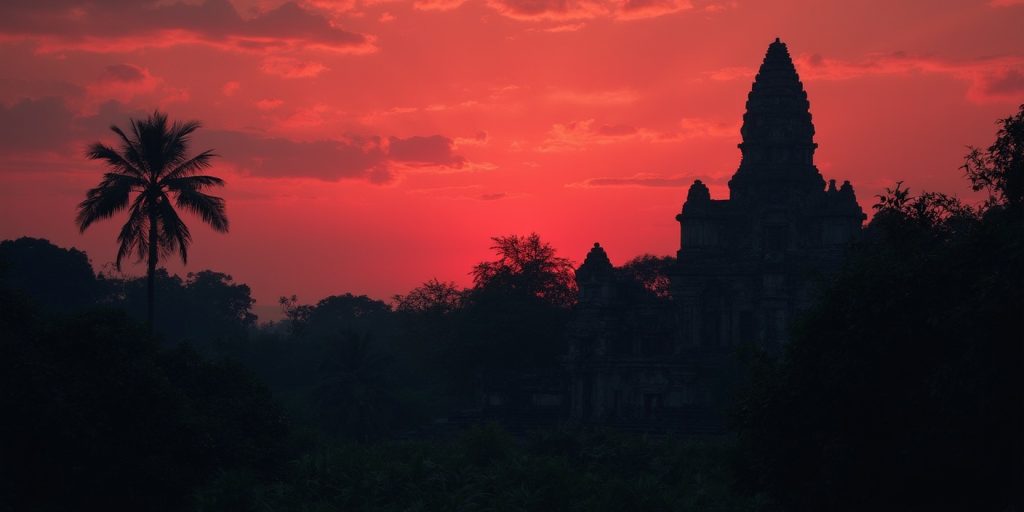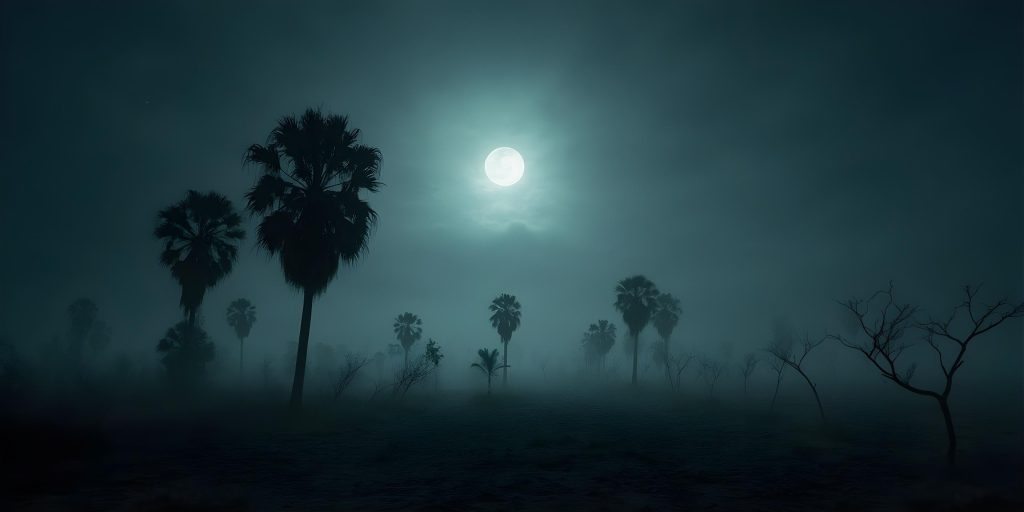
A Chilling Tale from Cambodia's Killing Fields
The small village of Kampong Kdei nestled quietly along the banks of the Mekong River, its serenity belying the dark history that lay beneath its soil. Nearby, a stretch of land known as the Killing Fields held the whispers of those unfairly silenced during Cambodia’s darkest era. Villagers avoided this cursed place, where it was said that the souls of the past still wandered, seeking justice.

Long had the villagers spoken of Miss Sovannara, a school teacher who vanished during the oppressive regime—a story shrouded in mystery. Only fragments of her presence remained, scattered in the memories of the old.
Sokchea, an aspiring journalist from Phnom Penh, was driven by an insatiable curiosity to uncover the truth behind these village legends. He believed that unraveling the mystery of Sovannara’s disappearance might shine a light on the untold horrors of the past. Despite the warnings from his editors, Sokchea traveled to Kampong Kdei, determined to piece together the story.
He began his work with the elders, their eyes clouded with the memories they wished to forget. Their tales were fragmented yet consistent—echoes of sightings and distant screams carried by the unsettling winds that swept across the fields at night.

Intrigued and driven by an unsettling resolve, Sokchea decided to visit the fields under the cover of night, ignoring the dread that constricted his heart. As he approached the edge of the Killing Fields, a heavy mist began to rise, shrouding the earth in ghostly tendrils that wove through the skeletal remains of shattered stupa relics.

Sokchea ventured deeper into this hallowed ground, the silence pressing in on him like a heavy blanket. His flashlight flickered over the ground, illuminating the path ahead as his breath formed icy plumes in the chill night air. It was then that he heard it—a gentle, mournful humming, almost musical, drifting on the breeze.
Drawn inexorably towards the sound, he followed it to an ancient banyan tree, its roots twisting and turning like serpents into the earth. There, nestled among its gnarled limbs, was the faint outline of a spectral figure. Her features were ethereal and beautiful, illuminated by a soft, otherworldly light that seemed to flow from within.

“Who are you?” Sokchea whispered, both frightened and enthralled by the sight before him.
The spirit, her voice a soft whisper on the wind, replied, “I am Sovannara. I am the story you seek.”
Sokchea stood frozen as the spirit showed him fragments of her life—a passionate teacher defying the regime, her betrayal by a trusted friend, and her last moments spent in the shadow of the banyan tree. Her tale was one of courage and tragedy, of life extinguished too soon.
Driven by empathy and determination, Sokchea promised to tell her story, to reveal the truths she carried in death. The visions and sensations faded, leaving him alone once more, a heavy weight of responsibility on his shoulders.
Returning to the village, Sokchea delved into his research, gathering corroborations that pieced together the life and death of Sovannara. He visited archives, spoke to survivors willing to recount their darkest memories, weaving a narrative that spoke not just of one woman’s end, but of a nation’s suffering and resilience.

Finally, his work was published, illuminating the dark corners of a past that many wished to forget. The villagers of Kampong Kdei held a remembrance ceremony for Sovannara, honoring her bravery and the spirit that continued to haunt them in the best of ways.
Standing before the banyan tree where he first saw her, Sokchea felt a sense of peace wash over him as the first rays of dawn broke the horizon. He knew that Sovannara had found her voice in the world once and the truths he unearthed would ripple out to others seeking justice and reconciliation for Cambodia’s painful history.
With the village gathered, candles were lit and placed around the banyan tree, their soft glow illuminating the somber yet hopeful faces of the attendees. Sokchea stepped forward, bowing in respect. As the sun rose, its light casting warm hues over the field, the atmosphere changed subtly.
The oppressive weight felt by the villagers for so long seemed to lift, and a gentle breeze stirred the blossoms in the trees. It was as if Sovannara’s spirit was finally at peace.

After the ceremony, Sokchea returned to Phnom Penh, his article gaining attention both locally and internationally. It sparked conversations about reconciliation, healing, and the importance of remembering those like Sovannara who had been lost but not forgotten. More than just a ghost story, it was a tale of courage and the relentless pursuit of truth.

The haunting of the Killing Fields had become not just a legend, but a testament to standing against tyranny and honoring those who suffered. Sokchea knew that this was not just the end of Sovannara’s story, but the beginning of many others who would step forward to reclaim their narratives, shining a light into the shadows of Cambodia’s past.





This is such a haunting reminder of Cambodia’s painful past. Do the villagers ever talk about what happened there?
This story is a haunting reminder of Cambodia’s tragic past, weaving history and mystery into a chilling narrative. The tale of Miss Sovannara’s disappearance adds a personal touch, drawing readers into the sorrow of that era. Sokchea’s courage in seeking the truth highlights the importance of remembering and honoring those who suffered. The eerie atmosphere of the Killing Fields is vividly described, making the reader feel the weight of its history. Will Sokchea uncover the truth about Sovannara, or will the secrets of the past remain buried forever?